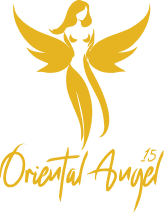I. Setting the Stage
Talking about a Melbourne brothel often raises curiosity, assumptions, or strong opinions. But to understand the work environment, you need more than pop culture references. You need structured knowledge, practical science, and real-world insights into how such spaces operate.
This blog does not aim to glorify or stigmatise—it is written to provide clear, researched, and nuanced information for those who want to understand the dynamics of regulated environments, daily routines, financial structures, health protocols, and the bigger picture of human behaviour.
II. Daily Operations in a Melbourne Brothel
A Melbourne brothel is not chaotic; it functions on systems and routines. Staff and workers manage schedules like any hospitality setting. Shifts, client bookings, room readiness, and service protocols are organised to reduce stress and maximise safety.
Shift Planning: Workers often choose time blocks. Planning helps balance workloads and ensures steady availability.
Preparation Routines: Hygiene, grooming, and room checks are standard. Just as a chef preps a kitchen, preparation sets the baseline for professionalism.
Client Process: Identification checks, discussions of boundaries, and agreement on terms occur before any interaction begins. This structure reduces ambiguity and risk.
Science tells us that routine lowers anxiety. Studies in occupational psychology show workers with predictable processes report higher levels of perceived control, which lowers stress.
III. Financial Structures and Responsibilities
Money is the practical core of a Melbourne brothel. The financial system is transparent enough to sustain operations, but it also requires personal responsibility.
Percentage Splits: Workers keep a portion of the booking fee, while the establishment retains a share to cover fixed expenses like rent, utilities, and security.
Contractual Agreements: Contracts clarify shifts, rules, dress codes, and financial splits. Reading and understanding terms is vital.
Taxation: In Australia, sex work earnings are taxable. Keeping accurate records, saving for quarterly tax payments, and consulting professionals ensures compliance.
From a behavioural economics perspective, structured earnings give stability but also create pressure to manage short-term cash flow. Mismanagement can quickly spiral into financial stress.
IV. Safety Mechanisms and Security Systems
A regulated Melbourne brothel emphasises safety not only for legal compliance but for human well-being.
Surveillance Systems: Cameras monitor common areas, discouraging misconduct.
Panic Buttons: Installed in private spaces to allow immediate alerts in emergencies.
On-Site Security: Trained personnel intervene when necessary, preventing escalation.
Clear Rules: Clients who break boundaries face bans.
Occupational safety science underlines “redundancy of protection.” Multiple overlapping safety systems reduce the risk of failure. This layered design reflects principles used in aviation and medicine.
V. Health Protocols and Well-being
Public health frameworks heavily shape the operations of a Melbourne brothel.
Regular Medical Testing: STI screenings protect both workers and clients.
Mandatory Hygiene Standards: Showers, condom use, and clean linens are part of protocol.
Mental Health Access: Counselling or peer-support systems exist to counter burnout and stress.
From an epidemiological standpoint, enforced health rules significantly reduce the prevalence of disease transmission in regulated environments compared to unregulated spaces.
VI. The Psychological Landscape
Working in a Melbourne brothel is not only physical—it is emotional and cognitive.
Emotional Labour: Managing client expectations requires empathy and self-regulation.
Boundaries: Workers must assert and maintain clear boundaries to avoid psychological exhaustion.
Support Networks: Peer communities help normalise experiences and reduce isolation.
Research in psychology calls this “surface acting” vs “deep acting”—deciding when to perform emotions and when to genuinely connect. Long-term reliance on surface acting without support can increase burnout risks.
VII. Legal Frameworks and Compliance
The regulation of a Melbourne brothel comes under specific legal structures in Victoria. Understanding them is essential.
Licensing: Only licensed venues are permitted to operate.
Work Cards: Workers may require registration or permits.
Labour Protections: Anti-discrimination and workplace safety laws apply.
Taxation and Record-Keeping: Legal compliance avoids penalties.
Legal science emphasises “clarity of regulation”—ambiguity invites exploitation. Workers who understand rights and obligations navigate the system more effectively.
VIII. Addressing Persistent Myths
Educational correction is essential because stereotypes create harm. Let’s address some persistent misconceptions about a Melbourne brothel.
Myth 1: Everyone is coerced. While trafficking exists, not all sex workers are victims. Many make informed choices.
Myth 2: It’s easy money. In truth, the work is physically and emotionally demanding.
Myth 3: Workers lack education. Many are educated, multilingual, or come from varied professional backgrounds.
Myth 4: Brothels are unsafe. Regulated environments in Melbourne operate under strict safety and hygiene laws.
Debunking myths is not just cultural—it has psychological value, reducing stigma and affirming dignity.
IX. Social Perceptions and Stigma
A Melbourne brothel operates within society, and social stigma remains a major challenge.
Public Perception: Sex work is often misunderstood, leading to prejudice.
Family Impact: Disclosure may strain personal relationships.
Employment Barriers: Transitioning into other industries can be difficult due to stigma.
Sociology studies show stigma functions like “social labelling,” impacting self-identity and opportunities. Building resilience and connecting with advocacy groups can mitigate long-term effects.
X. Health Science of Risk and Resilience
From a biomedical view, risk never disappears—it is managed. Workers in a Melbourne brothel employ multiple strategies:
Barrier Methods: Condoms and dental dams remain the gold standard.
Vaccinations: Hepatitis B and HPV vaccines add protective layers.
Self-Care: Sleep, nutrition, and exercise enhance resilience.
Resilience science emphasises adaptation. Workers who treat health holistically—physical, mental, and social—report better longevity in their careers.
XI. Exit Strategies and Career Transitions
A career in a Melbourne brothel is often temporary. Exit planning is crucial.
Savings Plans: Setting aside a portion of income secures future flexibility.
Education: Many pursue courses or training while working.
Support Services: Nonprofits offer resources for transitioning out.
Economists call this “human capital reinvestment”—using income from one job to prepare for another.
XII. Final Thoughts
A Melbourne brothel represents more than the simple exchange often imagined. It is a workplace shaped by systems of law, science, safety, and psychology. Exploring it requires critical thinking, not assumptions.
By looking into routines, financial structures, safety mechanisms, health practices, and myths, this blog offers a deeper picture of the realities. Whether one engages with this world academically, professionally, or personally, the key is informed understanding.





